Search
- Page Path
-
- HOME
- Search
- Review Article
- Pulmonology
- The past, present, and future of humidifier disinfectant-associated interstitial lung diseases in children
- Eun Lee, So-Yeon Lee, Soo-Jong Hong
- Clin Exp Pediatr. 2020;63(7):251-258. Published online December 9, 2019
-
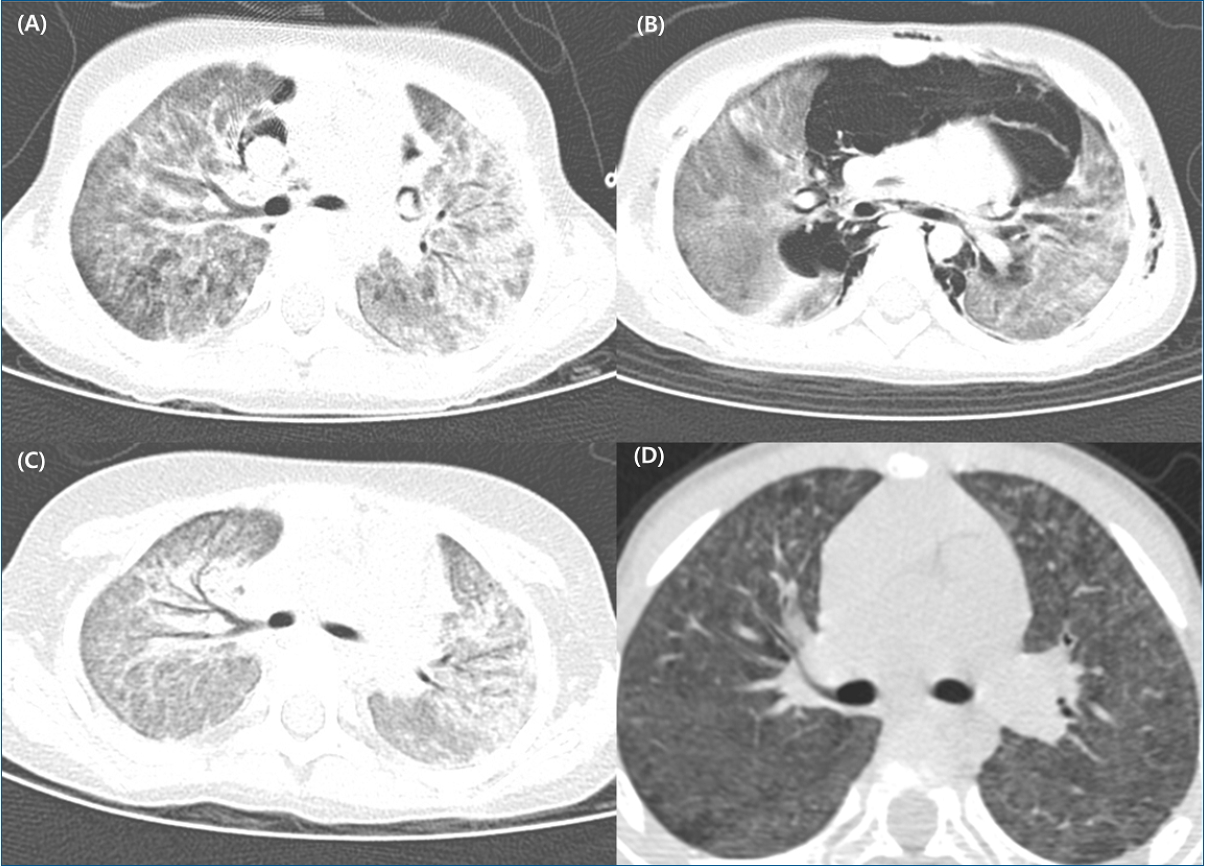
Exposure to environmental factors can cause interstitial lung diseases (ILDs); however, such types of ILDs are rare. From 2007 to 2011, an ILD epidemic occurred in South Korea owing to inhalational exposure to toxic chemicals in humidifier disinfectants (HDs). HD-associated ILDs (HD-ILDs) are characterized by rapidly progressing respiratory failure with pulmonary fibrosis and a high mortality rate of 43.8%−58.0%. Although...
- Original Article
- Endocrinology
- Effect of agricultural pesticide on precocious puberty in urban children: an exploratory study
- Junghwan Suh, Han Saem Choi, Ahreum Kwon, Hyun Wook Chae, Ho-Seong Kim
- Clin Exp Pediatr. 2020;63(4):146-150. Published online December 6, 2019
-

Question: Does agricultural pesticide effect precocious puberty in girls?
Finding: Dinotefuran, an insecticide of neonicotinoid class, was detected in one of 30 patients with precocious puberty, and in 2 girls of the normal control group, which was not statistically significant.
Meaning: There was no close relationship between agricultural pesticides and development of precocious puberty.
- Review Article
- Nephrology (Genitourinary)
- Reconsideration of urine culture for the diagnosis of acute pyelonephritis in children: a new challenging method for diagnosing acute pyelonephritis
- Jun Ho Lee, Seonkyeong Rhie
- Clin Exp Pediatr. 2019;62(12):433-437. Published online October 18, 2019
-
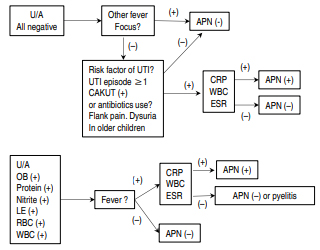
Acute pyelonephritis (APN) should be detected and treated as soon as possible to reduce the risk of the development of acquired renal scarring. However, in the medical field, urine culture results are not available or considered when the prompt discrimination of APN is necessary and empirical treatment is started. Furthermore, urine culture cannot discriminate APN among children with febrile urinary...
- Cardiology
- Reality of Kawasaki disease epidemiology
- Gi Beom Kim
- Clin Exp Pediatr. 2019;62(8):292-296. Published online July 9, 2019
-
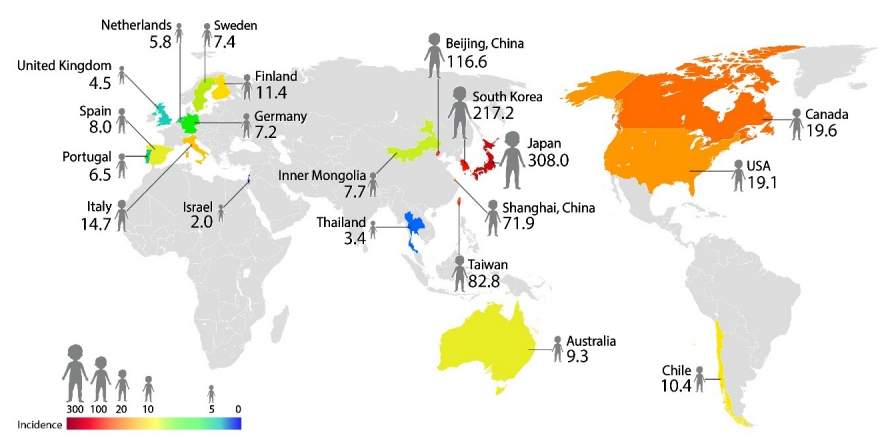
Epidemiologic studies of Kawasaki disease (KD) have shown a new pattern or change of its occurrence suggestive of its pathophysiology or risk factors from the first patient with KD reported in 1961. The incidence of KD in Northeast Asian countries including Japan, South Korea, China, and Taiwan is 10–30 times higher than that in the United States and Europe. Knowing...
- Gastroenterology
- The role of fecal calprotectin in pediatric disease
- Su Jin Jeong
- Clin Exp Pediatr. 2019;62(8):287-291. Published online March 28, 2019
-
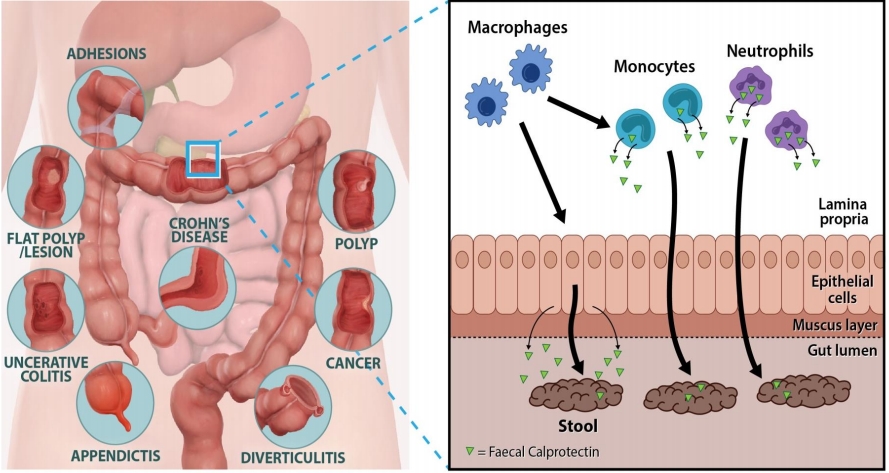
Fecal calprotectin (FC) is a calcium- and zinc-binding protein of the S100 family, mainly expressed by neutrophils and released during inflammation. FC became an increasingly useful tool both for gastroenterologists and for general practitioners for distinguishing inflammatory bowel disease (IBD) from irritable bowel syndrome. Increasing evidences support the use of this biomarker for diagnosis, follow-up and evaluation of response to...
- Original Article
- Infection
- A contact investigation after exposure to a child with disseminated tuberculosis mimicking inflammatory bowel disease
- Dongsub Kim, Sodam Lee, Sang-Hee Kang, Mi-Sun Park, So-Young Yoo, Tae Yeon Jeon, Joon-Sik Choi, Bora Kim, Jong Rim Choi, Sun Young Cho, Doo Ryeon Chung, Yon Ho Choe, Yae-Jean Kim
- Clin Exp Pediatr. 2018;61(11):366-370. Published online November 15, 2018
-
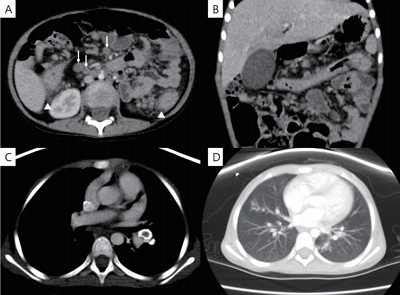
Purpose: Tuberculosis (TB) is one of the most important diseases that cause significant mortality and morbidity in young children. Data on TB transmission from an infected child are limited. Herein, we report a case of disseminated TB in a child and conducted a contact investigation among exposed individuals. Methods: A 4-year-old child without Bacille Calmette-Guérin vaccination was diagnosed as having culture-proven...
- Case Report
- Genetics and Metabolism
- The first Korean case with Floating-Harbor syndrome with a novel SRCAP mutation diagnosed by targeted exome sequencing
- Eun Mi Choi, Dong Hyun Lee, Seok Jin Kang, Ye Jee Shim, Heung Sik Kim, Jun Sik Kim, Jong In Jeong, Jung-Sook Ha, Ja-Hyun Jang
- Clin Exp Pediatr. 2018;61(12):403-406. Published online September 16, 2018
-

Floating-Harbor syndrome is a rare autosomal dominant genetic disorder associated with SRCAP mutation. To date, approximately 50 cases of Floating-Harbor syndrome have been reported, but none have been reported in Korea yet. Floating-Harbor syndrome is characterized by delayed bony maturation, unique facial features, and language impairment. Here, we present a 6-year-old boy with a triangular face, deep-set protruding eyes, low-set...
- Original Article
- Endocrinology
- Autoimmunity and intestinal colonization by Candida albicans in patients with type 1 diabetes at the time of the diagnosis
- Semra Gürsoy, Tuba Koçkar, Sezen Ugan Atik, Zerrin Önal, Hasan Önal, Erdal Adal
- Clin Exp Pediatr. 2018;61(7):217-220. Published online July 15, 2018
-
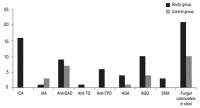
Purpose: Type 1 diabetes mellitus (T1DM) is a chronic and immune-mediated disease, which is characterized by the progressive destruction of pancreatic beta cells. T1DM precipitates in genetically susceptible individuals through environmental factors. In this study, we aimed to evaluate the impact of autoimmunity and intestinal colonization of Candida albicans on the development of T1DM. Methods: Forty-two patients newly diagnosed with T1DM...
- Case Report
- Allergy
- Breast abscess caused by
Staphylococcus aureus in 2 adolescent girls with atopic dermatitis - Sung Man Park, Won Sik Choi, YoonSun Yoon, Gee Hae Jung, Chang Kyu Lee, So Hyun Ahn, Yoon Wonsuck, Young Yoo
- Clin Exp Pediatr. 2018;61(6):200-204. Published online June 25, 2018
-

Atopic dermatitis (AD) is a chronic inflammatory skin disease in children. Patients with AD experience a high rate of colonization of the skin surface by
Staphylococcus aureus . Because of a skin barrier defect, there is a potential risk of staphylococcal invasive infection in patients with AD. Here, we present 2 cases of breast abscess caused byS. aureus in 2...
- Original Article
- Neurology
- Outcome of ultrasonographic imaging in infants with sacral dimple
- Jin Hyuk Choi, Taekwan Lee, Hyeok Hee Kwon, Sun Kyoung You, Joon Won Kang
- Clin Exp Pediatr. 2018;61(6):194-199. Published online June 25, 2018
-
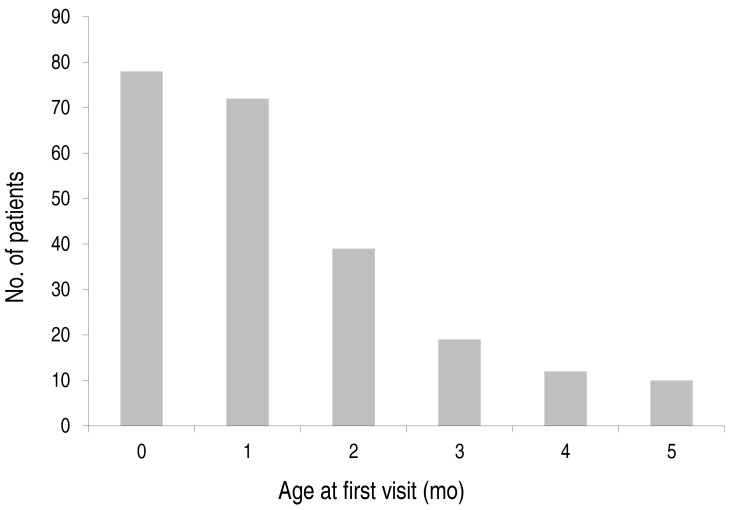
Purpose Sacral dimples are a common cutaneous anomaly in infants. Spine ultrasonography (USG) is an effective and safe screening tool for patients with a sacral dimple. The aim of this study was to determine the clinical manifestations in patients with an isolated sacral dimple and to review the management of spinal cord abnormalities identified with USG.
Methods We reviewed clinical records and collected...
- Cardiology
- Differentiation between incomplete Kawasaki disease and secondary hemophagocytic lymphohistiocytosis following Kawasaki disease using N-terminal pro-brain natriuretic peptide
- Jung Eun Choi, Yujin Kwak, Jung Won Huh, Eun-Sun Yoo, Kyung-Ha Ryu, Sejung Sohn, Young Mi Hong
- Clin Exp Pediatr. 2018;61(5):167-173. Published online May 28, 2018
-

Purpose Hemophagocytic lymphohistiocytosis (HLH) is a hyperinflammatory syndrome with many causes, including Kawasaki disease (KD). The purpose of this study was to identify the laboratory tests needed to easily differentiate KD with HLH from incomplete KD alone.
Methods We performed a retrospective study on patients diagnosed with incomplete KD and incomplete KD with HLH (HLH-KD) between January 2012 and March 2015. We compared...
- Case Report
- Neonatology (Perinatology)
- Case of mucinous adenocarcinoma of the lung associated with congenital pulmonary airway malformation in a neonate
- Juneyoug Koh, Euiseok Jung, Se Jin Jang, Dong Kwan Kim, Byong Sop Lee, Ki-Soo Kim, Ellen Ai-Rhan Kim
- Clin Exp Pediatr. 2018;61(1):30-34. Published online January 22, 2018
-
Congenital pulmonary airway malformation (CPAM), previously known as congenital cystic adenomatoid malformation, is a rare developmental lung abnormality associated with rhabdomyosarcoma, pleuropulmonary blastoma, and mucinous adenocarcinoma of the lung. We report an unusual case of a 10-day-old male newborn with a left lower lobe pulmonary cyst who underwent lobectomy, which revealed type II CPAM complicated by multifocal mucinous adenocarcinoma. KRAS...
- Original Article
- Allergy
- Accuracy of maximal expiratory flow-volume curve curvilinearity and fractional exhaled nitric oxide for detection of children with atopic asthma
- Sang Hoo Park, Min Ji Im, Sang-Yong Eom, Youn-Soo Hahn
- Clin Exp Pediatr. 2017;60(9):290-295. Published online September 21, 2017
-
Purpose Airway pathology in children with atopic asthma can be reflected by the concave shape of the maximal expiratory flow-volume (MEFV) curve and high fractional exhaled nitric oxide (FeNO) values. We evaluated the capacity of the curvilinearity of the MEFV curve, FeNO, and their combination to distinguish subjects with atopic asthma from healthy individuals.
Methods FeNO and angle β, which characterizes the general...
- General Pediatrics
- Sleep problems in children and adolescents at pediatric clinics
- Dong Soon Kim, Cho Long Lee, Young Min Ahn
- Clin Exp Pediatr. 2017;60(5):158-165. Published online May 31, 2017
-
Purpose To investigate the frequency of childhood sleep problems at pediatric clinics in Seoul and Gyeonggi provinces.
Methods Children (n=936) and their parents who visited 5 primary and 1 secondary pediatric outpatient clinics were invited to complete a Pediatric Sleep Questionnaire.
Results Among patients, 901 (96.3%) answered questionnaires in sufficient detail for evaluation. The participant's mean age was 4.35±3.02 years (range, 0–18 years). The male...
- Review Article
- Oncology
- Prognostic factors and treatment of pediatric acute lymphoblastic leukemia
- Jae Wook Lee, Bin Cho
- Clin Exp Pediatr. 2017;60(5):129-137. Published online May 31, 2017
-
The event-free survival (EFS) for pediatric acute lymphoblastic leukemia (ALL) has shown remarkable improvement in the past several decades. In Korea also, a recent study showed 10-year EFS of 78.5%. Much of the improved outcome for pediatric ALL stems from the accurate identification of prognostic factors, the designation of risk group based on these factors, and treatment of appropriate duration...
- Case Report
- Nephrology (Genitourinary)
- Successful treatment of tubulointerstitial nephritis and uveitis with steroid and azathioprine in a 12-year-old boy
- Ji Eun Kim, Se Jin Park, Ji Young Oh, Hyeon Joo Jeong, Ji Hong Kim, Jae Il Shin
- Clin Exp Pediatr. 2016;59(Suppl 1):S99-S102. Published online November 30, 2016
-
Tubulointerstitial nephritis and uveitis (TINU) syndrome is a rare disease, often underdiagnosed or misdiagnosed in children. We describe the case of a 12-year-old boy who presented to Severance Hospital with a 1-month history of bilateral conjunctival injection. He was first evaluated by an Ophthalmologist in another hospital and diagnosed with panuveitis. Laboratory tests indicated renal failure, and a renal biopsy...
- Original Article
- Infection
Pneumocystis jirovecii pneumonia in pediatric patients: an analysis of 15 confirmed consecutive cases during 14 years- Kyung-Ran Kim, Jong Min Kim, Ji-Man Kang, Yae-Jean Kim
- Clin Exp Pediatr. 2016;59(6):252-255. Published online June 30, 2016
-
Purpose Pneumocystis jirovecii pneumonia occurs in various immunocompromised patients. Despite the prophylaxis strategies in clinical practice, certain patients developP. jirovecii pneumonia. This study was performed to investigate pediatric cases withP. jirovecii pneumonia in a single center.Methods We identified pediatric patients younger than 19 years with microbiologically confirmed
P. jirovecii pneumonia from January 2000 to February 2014. A retrospective chart review...
- Cardiology
- Subclinical left ventricular dysfunction in children after hematopoietic stem cell transplantation for severe aplastic anemia: a case control study using speckle tracking echocardiography
- Beom Joon Kim, Kyung Pil Moon, Ji-Hong Yoon, Eun-Jung Lee, Jae Young Lee, Seong Koo Kim, Jae Wook Lee, Nack Gyun Chung, Bin Cho, Hack Ki Kim
- Clin Exp Pediatr. 2016;59(4):190-195. Published online April 30, 2016
-
Purpose Severe aplastic anemia (SAA), a fatal disease, requires multiple transfusion, immunosuppressive therapy, and finally, hematopoietic stem cell transplantation (HSCT) as the definitive treatment. We hypothesized that iron overloading associated with multiple transfusions and HSCTrelated complications may adversely affect cardiac function. Left ventricular (LV) function was assessed in children after HSCT for SAA.
Methods Forty-six consecutive patients with a median age of 9.8...
- Nephrology (Genitourinary)
- Acute tubular necrosis as a part of vancomycin induced drug rash with eosinophilia and systemic symptoms syndrome with coincident postinfectious glomerulonephritis
- Kyung Min Kim, Kyoung Sung, Hea Koung Yang, Seong Heon Kim, Hye Young Kim, Gil Ho Ban, Su Eun Park, Hyoung Doo Lee, Su Young Kim
- Clin Exp Pediatr. 2016;59(3):145-148. Published online March 31, 2016
-
Drug rash with eosinophilia and systemic symptoms (DRESS) syndrome is a rare and potentially fatal condition characterized by skin rash, fever, eosinophilia, and multiorgan involvement. Various drugs may be associated with this syndrome including carbamazepine, allopurinol, and sulfasalazine. Renal involvement in DRESS syndrome most commonly presents as acute kidney injury due to interstitial nephritis. An 11-year-old boy was referred to...
- Case Report
- Infection
- Tuberculosis-associated hemophagocytic lymphohistiocytosis in adolescent diagnosed by polymerase chain reaction
- Ju-Hee Seo, Jun Ah Lee, Dong Ho Kim, Joongbum Cho, Jung Sub Lim
- Clin Exp Pediatr. 2016;59(1):43-46. Published online January 22, 2016
-
We present a case of tuberculosis-associated hemophagocytic lymphohistiocytosis in a 14-year-old girl. The patient presented with weight loss, malaise, fatigue, prolonged fever, and generalized lymphadenopathy. Laboratory investigation revealed pancytopenia (white blood cells, 2,020 cells/µL; hemoglobin, 10.2 g/dL; platelets, 52,000 cells/µL), hypertriglyceridemia (229 mg/dL), and hyperferritinemia (1,420 ng/mL). Bone marrow biopsy showed a hypocellular bone marrow with a large numbers of...
- Original Article
- Intercontinental comparison of caustic ingestion in children
- Mandana Rafeey, Morteza Ghojazadeh, Amir Mehdizadeh, Hakimeh Hazrati, Leila Vahedi
- Clin Exp Pediatr. 2015;58(12):491-500. Published online December 22, 2015
-
Purpose To investigate the caustic ingestion in children among different continents according to demographic characteristics (core purpose), main symptoms, common caustic agents, signs and symptoms, management, treatment and complications.
Methods This systematic review was performed by searching the databases Science Direct, ProQuest, Google Scholar, and PubMed, electronically and manually. We included studies that were published from 1980 to 2013, at University of Medical...
- Prognostic factors in children with extracranial germ cell tumors treated with cisplatin-based chemotherapy
- Jinsup Kim, Na Hee Lee, Soo Hyun Lee, Keon Hee Yoo, Ki Woong Sung, Hong Hoe Koo, Jeong-Meen Seo, Suk-Koo Lee
- Clin Exp Pediatr. 2015;58(10):386-391. Published online October 21, 2015
-
Purpose To evaluate the outcomes and prognostic factors in children with extracranial germ cell tumors (GCTs) treated at a single institution.
Methods Sixty-six children diagnosed with extracranial GCTs between 1996 and 2012 were included in the study. Primary treatment was surgical excision, followed by six cycles of cisplatin-based chemotherapy. The survival rates were compared according to the International Germ Cell Cancer Cooperative Group...
- Case Report
- Hemophagocytic lymphohistiocytosis diagnosed by brain biopsy
- Hee Young Ju, Che Ry Hong, Sung Jin Kim, Ji Won Lee, Hyery Kim, Hyoung Jin Kang, Kyung Duk Park, Hee Young Shin, Jong-Hee Chae, Ji Hoon Phi, Jung-Eun Cheon, Sung-Hye Park, Hyo Seop Ahn
- Clin Exp Pediatr. 2015;58(9):358-361. Published online September 21, 2015
-
Hemophagocytic lymphohistiocytosis (HLH) is characterized by fever, splenomegaly, jaundice, and pathologic findings of hemophagocytosis in bone marrow or other tissues such as the lymph nodes and liver. Pleocytosis, or the presence of elevated protein levels in cerebrospinal fluid, could be helpful in diagnosing HLH. However, the pathologic diagnosis of the brain is not included in the diagnostic criteria for this...
De novo interstitial deletion of 15q22q23 with global developmental delay and hypotonia: the first Korean case- Ha-Su Kim, Jin-Yeong Han, Myo-Jing Kim
- Clin Exp Pediatr. 2015;58(8):313-316. Published online August 21, 2015
-
Interstitial deletions involving the chromosome band 15q22q24 are very rare and only nine cases have been previously reported. Here, we report on a 12-day-old patient with a
de novo 15q22q23 interstitial deletion. He was born by elective cesarean section with a birth weight of 3,120 g at 41.3-week gestation. He presented with hypotonia, sensory and neural hearing loss, dysmorphism with...
- Graves disease following rabbit antithymocyte globulin treatment of severe aplastic anemia in a Korean child
- In Su Choi, Han Kyul Kim, Dong Kyun Han, Hee Jo Baek, Hae In Jang, Chan Jong Kim, Hoon Kook
- Clin Exp Pediatr. 2015;58(7):267-269. Published online July 22, 2015
-
Antithymocyte globulin (ATG) is used as an immunosuppressive treatment (IST) to deplete clonal suppressor T cells in patients with severe aplastic anemia (SAA). The depletion of suppressor T cells by ATG may affect the activation of B cells, which results in an increased risk for autoimmune conditions. A 12-year-old boy was diagnosed with idiopathic SAA. As he did not have...
- Review Article
- Haploidentical hematopoietic stem cell transplantation in children and adolescents with acquired severe aplastic anemia
- Ho Joon Im, Kyung-Nam Koh, Jong Jin Seo
- Clin Exp Pediatr. 2015;58(6):199-205. Published online June 22, 2015
-
Severe aplastic anemia (SAA) is a life-threatening disorder for which allogeneic hematopoietic stem cell transplantation (HSCT) is the current available curative treatment. HSCT from matched sibling donors (MSDs) is the preferred therapy for children with acquired SAA. For patients who lack MSDs, immunosuppressive therapy (IST) is widely accepted as a first-line treatment before considering HCT from an unrelated donor (URD)....
- Case Report
- DiGeorge syndrome who developed lymphoproliferative mediastinal mass
- Kyu Yeun Kim, Ji Ae Hur, Ki Hwan Kim, Yoon Jin Cha, Mi Jung Lee, Dong Soo Kim
- Clin Exp Pediatr. 2015;58(3):108-111. Published online March 20, 2015
-
DiGeorge syndrome is an immunodeficient disease associated with abnormal development of 3rd and 4th pharyngeal pouches. As a hemizygous deletion of chromosome 22q11.2 occurs, various clinical phenotypes are shown with a broad spectrum. Conotruncal cardiac anomalies, hypoplastic thymus, and hypocalcemia are the classic triad of DiGeorge syndrome. As this syndrome is characterized by hypoplastic or aplastic thymus, there are missing...
- Original Article
- The relationship between primary headache and constipation in children and adolescents
- Mi-Na Park, Min-Gyu Choi, Su Jeong You
- Clin Exp Pediatr. 2015;58(2):60-63. Published online February 28, 2015
-
Purpose Many patients presenting with headache also complain of constipation; the relationship between these two symptoms has not been explored in detail. The aim of this study was to investigate the association between primary headache and constipation.
Methods This retrospective study included all children who attended the Inje University Sanggye Paik Hospital complaining of headache, and who had been followed up for at...
- Lifestyle modifications in an adolescent dormitory: a clinical trial
- Ibrahim Abu-Kishk, Michal Alumot-Yehoshua, Gadi Reisler, Shai Efrati, Eran Kozer, Keren Doenyas-Barak, Michal Feldon, Zahi Dagan, Rami Reifen, Matitiahu Berkovitch
- Clin Exp Pediatr. 2014;57(12):520-525. Published online December 31, 2014
-
Purpose Childhood obesity is an increasing public health issue worldwide. We examined dietary patterns among adolescents in a dormitory school, identified obese adolescents and tried to intervene to improve food habits and physical activity.
Methods We conducted an experimental prospective longitudinal study based on 36 obese (body mass index [BMI]≥95th percentile) adolescents (aged 12-18 years) compared with controls (healthy children: normal age-appropriate BMI...
- Review Article
- BK virus-associated hemorrhagic cystitis after pediatric stem cell transplantation
- Seung Beom Han, Bin Cho, Jin Han Kang
- Clin Exp Pediatr. 2014;57(12):514-519. Published online December 31, 2014
-
Hemorrhagic cystitis is a common stem cell transplantation-related complication. The incidence of early-onset hemorrhagic cystitis, which is related to the pretransplant conditioning regimen, has decreased with the concomitant use of mesna and hyperhydration. However, late-onset hemorrhagic cystitis, which is usually caused by the BK virus, continues to develop. Although the BK virus is the most common pathogenic microorganism of poststem...
-

-
-
8.02023CiteScore94th percentilePowered by
-
Impact Factor3.2
-
- TOPICS
- ARTICLE CATEGORY
- Editorial Office
-
Korean Pediatric Society
#1606 Seocho World Officetel, 19 Seoun-ro, Seocho-ku, Seoul 06732, Korea
Tel: +82-2-3473-7306 Fax: +82-2-3473-7307 E-mail: office@e-cep.org
Clinical and Experimental Pediatrics is an open access journal. All articles are distributed under the terms of the Creative Commons Attribution NonCommercial License (http://creativecommons.org/licenses/by-nc/4.0/)
Copyright © 2025 by Korean Pediatric Society.











